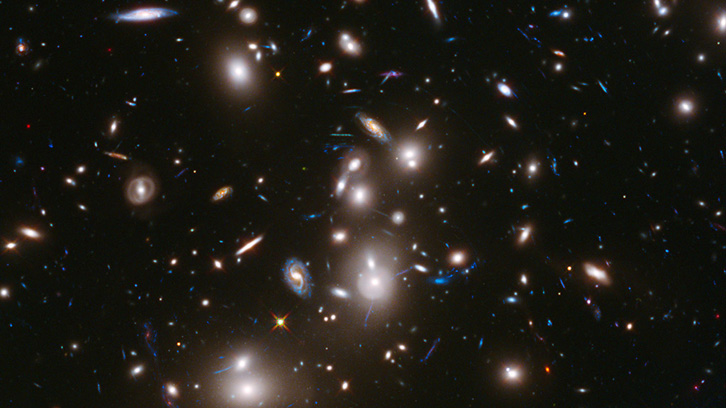Dark Energy Deteriorates into Exotic Matter

It is well known that the universe is not static and that it is currently expanding, given that the distance between galaxies and the clusters they form is growing gradually. This can be understood correctly through the general theory of relativity proposed by Einstein in 1915, which essentially relates the geometry of spacetime to the energy contained in it (spacetime tells matter how to move; matter tells spacetime how to curve). Thus, matter and energy force the universe not to remain static; what is more, a static situation, were it to exist, would be unstable and therefore not feasible.
From an astrophysics point of view we can talk about two types of matter: luminous matter (formed by stars and bright gas clouds) and dark matter. The latter can again be divided into "normal" dark matter (forming planets, dark stars, living beings, etc.), which can be found at low temperatures, and another type of dark matter - called exotic matter - incapable of producing light, and the existence of which is deduced by the influence of its gravitational field over the movement of stars (in this aspect it is similar to any other type of matter).
Until the end of the past century, all data collected by telescopes and radio telescopes pointed to a decrease in the rhythm of expansion. Nevertheless, the observation of distant supernovas (explosions of white dwarf stars) beyond our galaxy speak of the opposite: the rhythm of expansion is growing and therefore galaxies are moving away from each other at an increasing rate (although at very low speed). This fact can be explained without modifying Einstein's theory by turning to the existence of a new component, a type of energy with a highly negative pressure, in accordance with the density of the energy of this component. This energy, known as "dark energy", could be produced by a scalar field (a field similar in many aspects to that of the Higgs boson, recently produced in experiments conducted at CERN), or by another type of energy source such as the cosmological constant. In any case, although it is believed that its existence is real, there is still to need to prove it. It is worth highlighting that dark matter and dark energy (if it exists) makes up 96% of the energy in the universe.
The next inevitable step is to suppose that exotic dark matter and dark energy interact, not only gravitationally, but also through other types of interactions; possibly through weak interactions, well known in particle physics (e.g., the interaction responsible for the spontaneous disintegration of free neutrons). Theoretically all forms of energy, whether normal, photons, neutrinos, interact with the others to a greater or lesser extent (and sometime to an imperceptible degree). It is therefore not strange that many researchers have proposed different types of interactions between these two components. The list of scientific papers on this subject is fairly extensive and has been treated from different perspectives, mainly from the phenomenological viewpoint. The reason for this is that since we do not know the nature of these components it is even more difficult to suppose how they interact. And that is why the mathematical expression of the interaction is proposed almost exclusively on the basis of such fundamental principles as the conservation of energy: the energy released by one component is integrally received by another. There is however the need to clarify which one emits energy and which one receives it.
The proposal of the authors of the review article is that dark energy deteriorates into exotic dark matter, and not the other way around, since this would guarantee the increase in entropy principle. At least apparently, current observational data seems to point in that direction. Although the question is far from being clarified, there is well-founded hope that in the near future observational data from undergoing projects, as well as from other future projects, could explain the existence of dark energy, the interactions with exotic dark matter, in which direction the energy flows between the two, and - most difficult of all - what type of interaction exists between them.
Department of Physics
Universitat Autònoma de Barcelona
References
B. Wang; E. Abdalla; F. Atrio-Barandela; D. Pavón. "Dark matter and dark energy interactions: theoretical challenges, cosmological implications and observational signatures." Reports on Progress in Physics, 79 (2016) 096901. doi:10.1088/0034-4885/79/9/096901


